
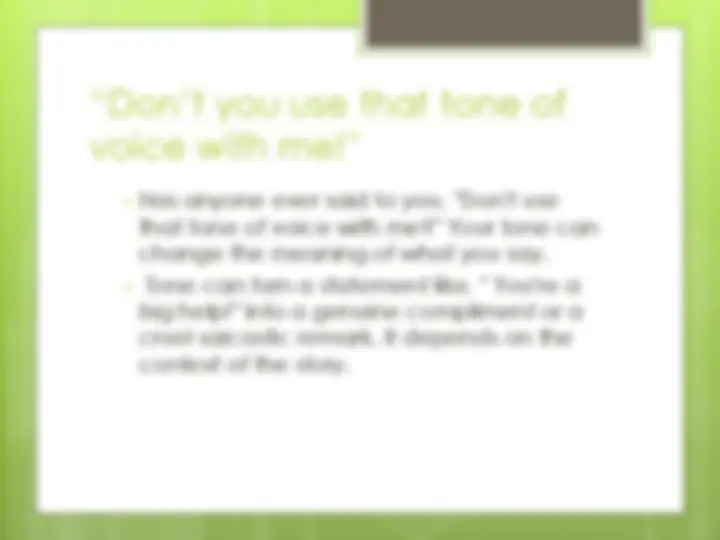
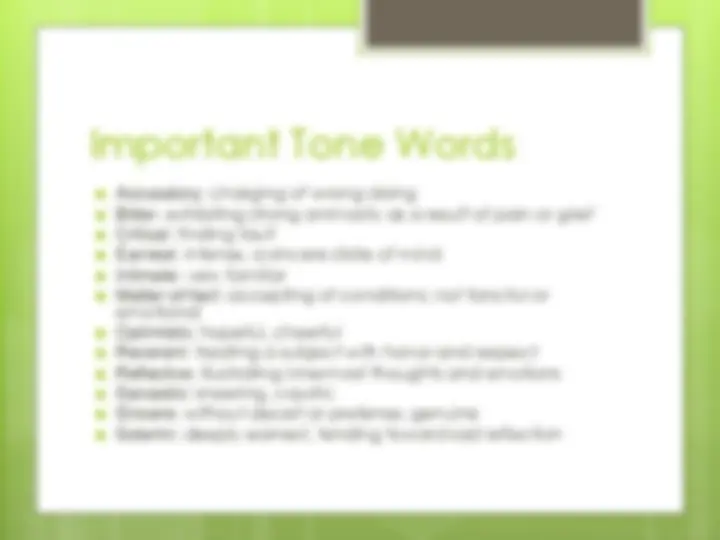
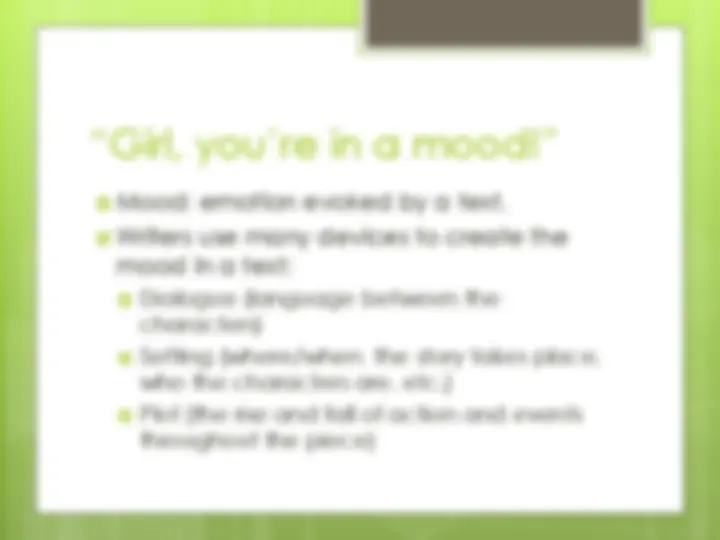
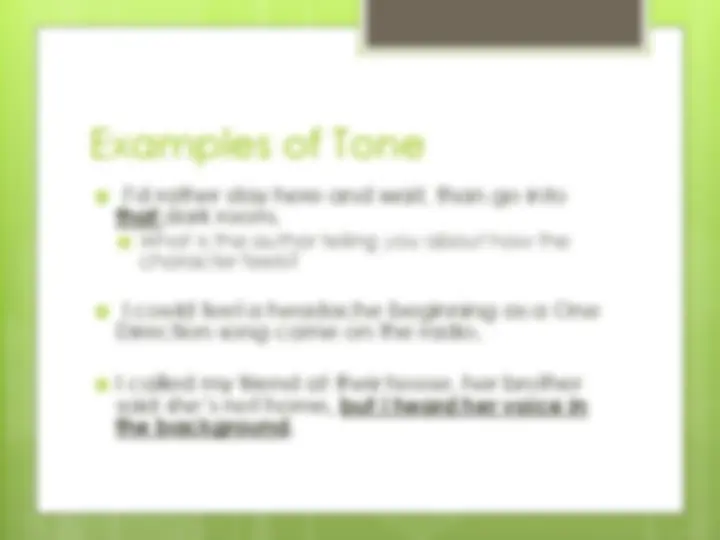
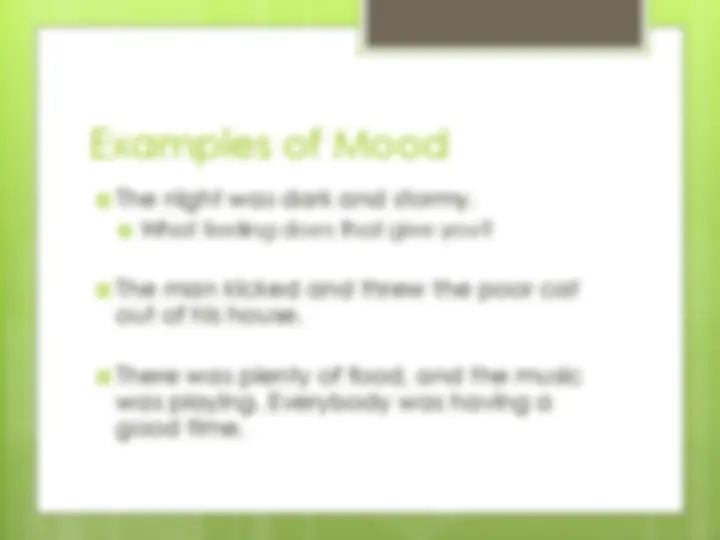
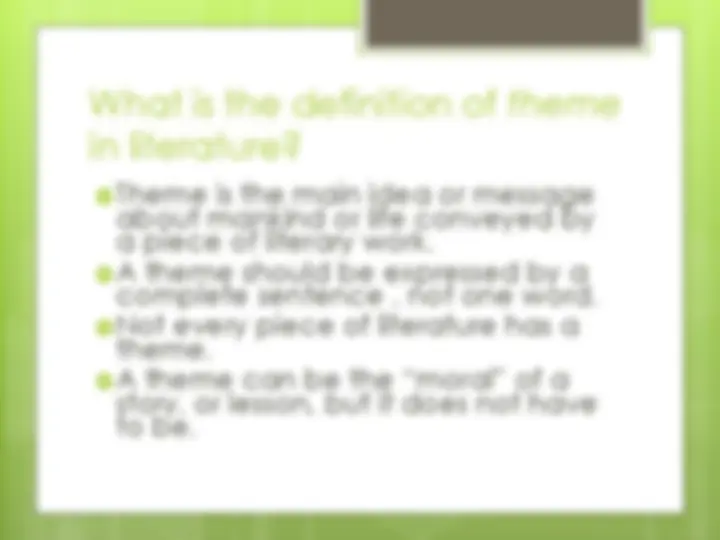
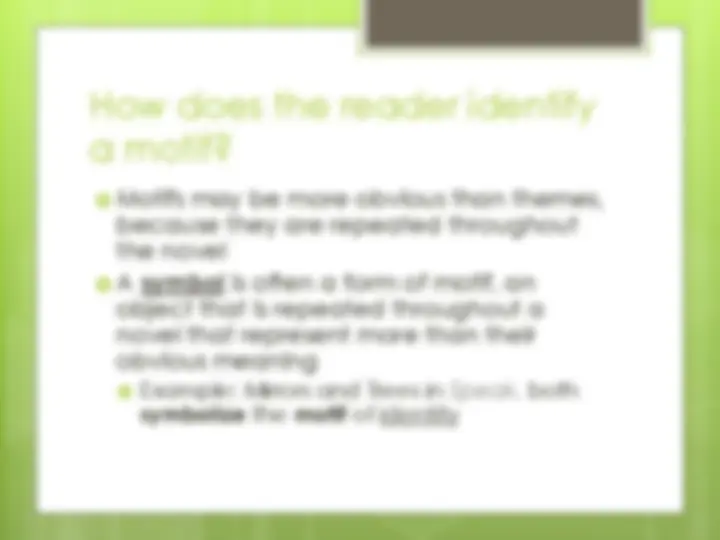


Study with the several resources on Docsity

Earn points by helping other students or get them with a premium plan


Prepare for your exams
Study with the several resources on Docsity

Earn points to download
Earn points by helping other students or get them with a premium plan
Community
Ask the community for help and clear up your study doubts
Discover the best universities in your country according to Docsity users
Free resources
Download our free guides on studying techniques, anxiety management strategies, and thesis advice from Docsity tutors
Accusatory: charging of wrong doing. Bitter: exhibiting strong animosity as a result of pain or grief. Critical: finding fault.
Typology: Assignments
1 / 13

This page cannot be seen from the preview
Don't miss anything!








“Boy, watch your tone when
speaking to me”
Tone: The writer’s attitude towards the subject of the piece, the audience, and self. Also known as, the way feelings are expressed. Conveyed through the use of: Diction (the words that the author uses in his/her writing) Point of View (the author’s view and how it affects his/her writing) Syntax (the arrangement of words to create sentences) And, the author’s level of formality (how formal or informal is the piece?)
Important Tone Words
Accusatory: charging of wrong doing Bitter: exhibiting strong animosity as a result of pain or grief Critical: finding fault Earnest: intense, a sincere state of mind Intimate: very familiar Matter-of-fact: accepting of conditions; not fanciful or emotional Optimistic: hopeful, cheerful Reverent: treating a subject with honor and respect Reflective: illustrating innermost thoughts and emotions Sarcastic: sneering, caustic Sincere: without deceit or pretense; genuine Solemn: deeply earnest, tending toward sad reflection
“Girl, you’re in a mood!”
Dialogue (language between the characters)
Setting (where/when the story takes place, who the characters are, etc.)
Plot (the rise and fall of action and events throughout the piece)
Tone and mood can very easily be confused! Tone simply refers to how the author/the author’s characters feel towards the subject, or towards something. You will know what the author’s tone is implying by the words he uses.
While ‘mood’, refers to the feeling of the atmosphere the author is describing. It is what the author makes you feel when you read his writings. You can read a sentence, and feel sad, happy or angry.
Examples of Tone
I’d rather stay here and wait, than go into that dark room. What is the author telling you about how the character feels?
I could feel a headache beginning as a One Direction song came on the radio.
I called my friend at their house, her brother said she’s not home , but I heard her voice in the background.
What is the definition of theme
in literature?
Theme is the main idea or message about mankind or life conveyed by a piece of literary work. A theme should be expressed by a complete sentence , not one word. Not every piece of literature has a theme. A theme can be the “moral” of a story, or lesson, but it does not have to be.
How does the reader identify
the theme?
How does the reader identify
a motif?
Example: Mirrors and Trees in Speak , both symbolize the motif of identity